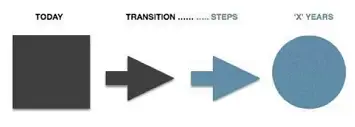
Every business, small or large, should engage in strategic thinking.
Strategic thinking is:
- Futuristic
- Open (for input from a variety of thinkers/people)
- Boundless (in its coverage and possibilities)
- Ongoing and consistent (not just a planning session nor conference)
- Challenging (to think up and about)
- Challenged (by others)
- Directional and strategic, not operational
Strategic thinking is not:
- Lengthy, wordy documents.
Strategic thinking must, eventually, impact the direction and strategies of the business. Successful businesses have sound directions and strategies, and are equally as capable of changing them when they need to do so. McDonalds, KMart, Apple, Cotton On, etc. have all demonstrated their ability to do that … but it’s not just big business that needs this capability .. it’s all businesses.
Here are some important points to help engage effective strategic thinking:
- The business has to be clear on the desired end game … what the business will be and look like eventually.
- Strategic thinking is a continuum, not a conference nor a plan created once every three or five years. It must be occurring non stop.
- Understand what direction and strategy is … the pathways to get to the end game.
It may involve changing markets, adding markets or even changing industries. - Don’t bring mission, vision, values, kpi’s and measurements into strategic thinking. It’s about direction and strategy.
- Don’t sweat the words used to describe the end game, directions or strategies. Just make sure that people understand and connect to them, without debating the literary value of them. And remember that ‘people support what they help create’ so their involvement in framing the directions and strategies can be important.
- Summarize your directions and strategies on one page so that everyone can be clear on them.
- Test regularly whether every person in the business is actually clear on the current directions and strategies, including people who have recently come into the business. If they aren’t clear then your business is not likely to be living them effectively.
- Directions and strategies should be regularly challenged, from within and from outside.
- Never let strategic thinking just be the domain of the owners, CEO or senior management group. Everyone in the business has a role to play in the process. They may not have the authority of the top group but they should have a voice because they can think, they are out and about and they are the people enacting the directions and strategies.
- Test what directional and strategic changes your business has made in the last one, two and three years … as evidence of the level of strategic thinking being engaged.
Examples of successful strategic thinking:
- McDonalds now targets more adult customers via McCafes, greater breadth of food on their menus and more flexibility in what the customer can order.
- KMart reduced its number of sku’s (stock keeping units), resituated its customer
service and altered its staffing levels as ways to improve its market position.

- Apple relies heavily on a strategy of telling customers what they need rather than asking them.
TRANSITION YOUR BUSINESS INTO THE FUTURE
Larry Page (Google): “Lots of companies don’t succeed over time. What they fundamentally do wrong is they miss the future.”
Dick Pratt : “Don’t blame anything except your inability to anticipate.”
There is so much in both of those quotes that all businesses should take heed of. Running a business well today is not the same as creating what it should be in the future. They are separate activities; they are related but they are separated. It’s a trap for business owners to think that it’s a choice between today’s business model OR an alternative business model. It’s not a choice … it’s a transition. If a choice had to be made between today’s model and a better model, then the better model may not be chosen because of the difficulty or perceived risk of change. But if it’s seen under a different perspective, that today’s business model can / should be transitioned to a much improved business model, then they are not competing alternatives. That is way more likely to lead to a better business model in future.
The left side of the diagram above (black) represents today’s business. The right side of the diagram (green) represents tomorrow’s business, which is fundamentally different. It could be viewed as being, say, 2 years away … long enough so as to not threaten today’s business but soon enough to create some urgency and excitement in forward thinking.
We then have two business models .. today’s and tomorrow’s … not competing but transitioning from one to the other, over time. Once this is understood two things are required: 1) Design tomorrow’s business, and 2) Determine the steps for transition. The black to green arrows in the diagram above represent the steps, transitioning the business to the better model. This approach frees up future thinking as well as ensuring today’s business runs well.
It’s imperative that all discussions about business improvement are represented clearly with respect to which part of the diagram they relate to … the black side, the green side or the steps to transition from one to the other. Key people within the business must be astute in ensuring this clarity of reference. “That’s about running today’s business better” (black side). “That’s part of the design of the new business” (green side). “That’s a step towards the new business” (steps to transition).
Some of the biggest blockers to creating tomorrow’s business are:
- fear it won’t work
- risk aversion itself
- too busy to spend the time creating
- inability to foresee
- inability to create
- change resistance itself
The transition approach will help overcome most, if not all, of those blockages because it’s less threatening, more exciting, and is longer term in approach. People are therefore more likely to engage the creation and transition process. It also ensures that today’s business (model) is optimised so that current results are still maximized.
So, design and transition to your business of tomorrow and ‘don’t miss the future’, whilst still running today’s business well.
Previous Newsletter Articles
Contact Us
1300 022 270
enquiries@myabbs.com.au
Book An Appointment




